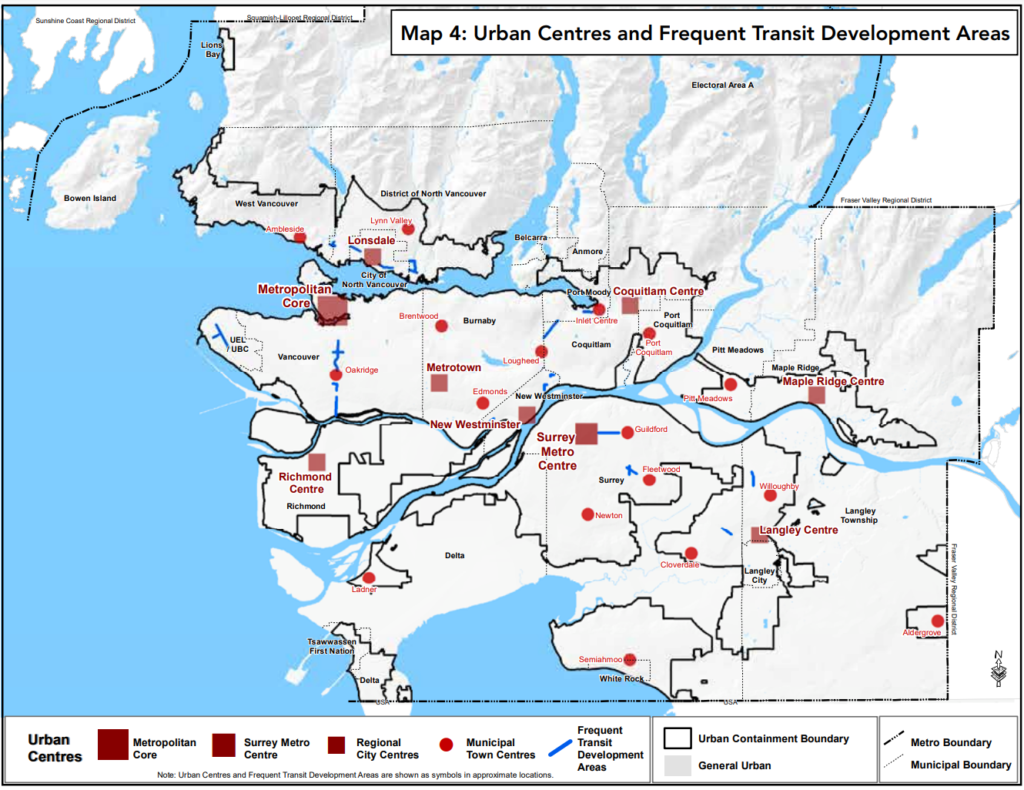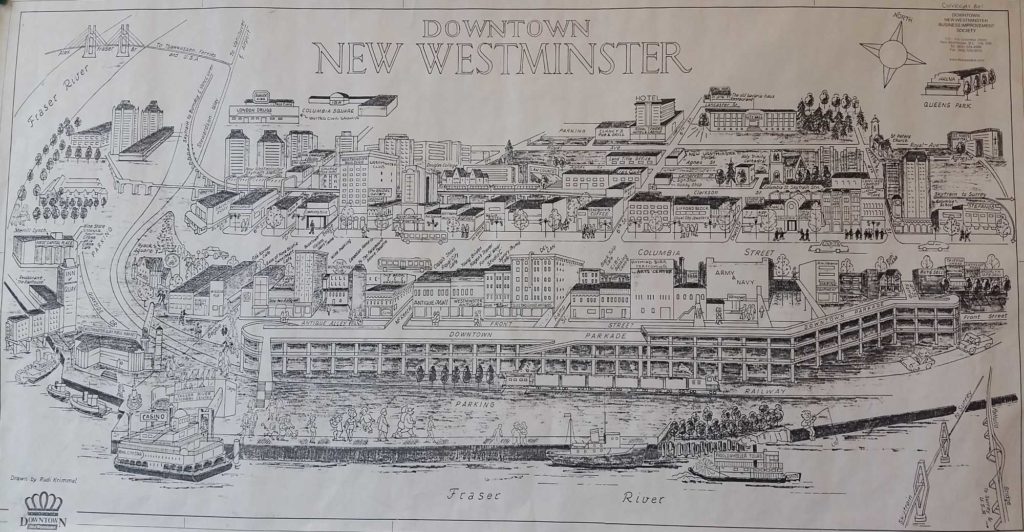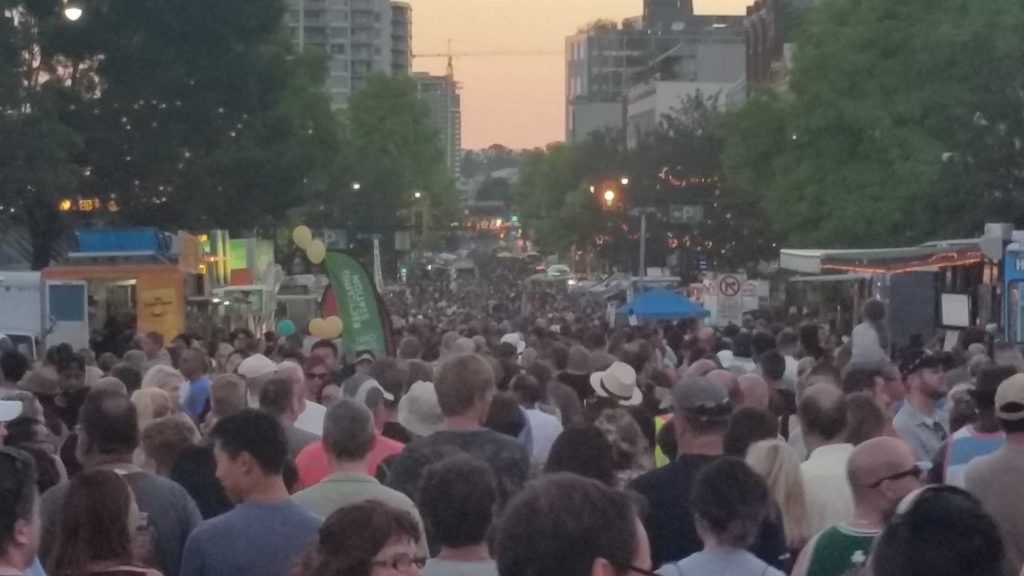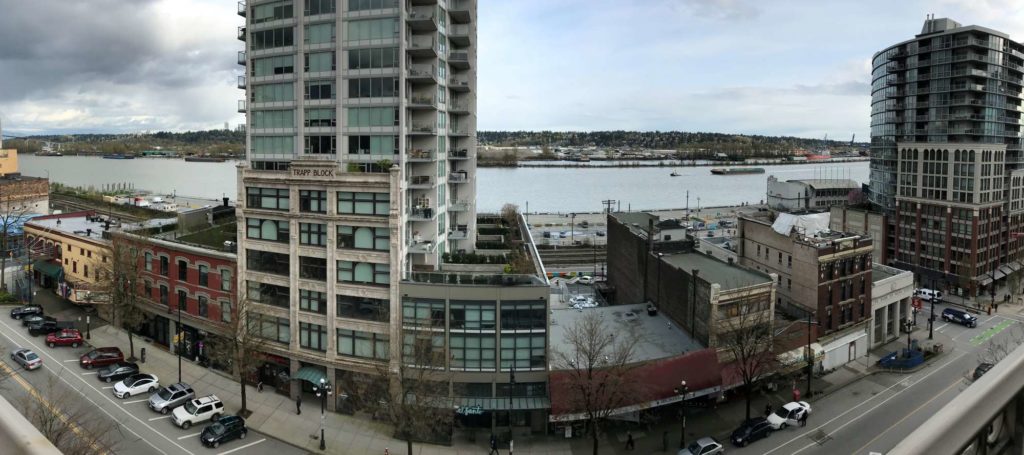The Council meeting this week was a pretty quick one, but dealt with some difficult subjects, and had a lot of background reading behind it. The Agenda started with a formal Apology:
Apology from the City of New Westminster to the South Asian Community and descendants of the Komagata Maru
When Council asked staff to look back at the history of New Westminster’s connections to the Komagata Maru event, they turned up some pretty troubling history relating specifically to the City Council of New Westminster. No need to repeat it all here (it is there in the report if you want the details), but the Council of the time (led by A. Wells Gray) used the event to stir white supremacist feelings and actions here in New West, even inviting our Member of Parliament (J.D. Taylor) to rally a crowd at a meeting and promising to pass white supremacist laws. This at a time when there was already a sizeable Asian population living, working, farming, and running businesses here in New Westminster. The Council of today wants to acknowledge that this history happened and apologize to the South Asian community for the action of this previous Council, to make clear that the unwelcoming and divisive attitude of the time is not consistent with our current goals and vision for the community.
We then had a presentation from BC Housing and a Report for Action:
Crisis Response Bylaw Amendments: Bylaws for First Reading and Engagement Plan Approval
BC Housing staff gave us a presentation to update us on supportive housing options and the modular housing delivery option they are exploring for a lit in Downtown. It is very similar to a previous and very successful project in Queensborough, although a housing provider (the not-for-profit organization that actually runs the housing in the messed up neoliberal model we are stuck in) has not yet been found. Anyway, BC housing wants to build 52 units of affordable housing on this lot in Downtown that has been a vacant weed farm with a fence around it since the old paint store was knocked down more than a decade ago. It can be up and running in less than a year through the rapid housing initiative. There is also a block of City-owned lots in Queensborough where the Vancouver Native Housing Society would like to leverage senior government funding to build 58 truly affordable rental units. These applications require both OCP amendments and Rezonings, and as the City doesn’t want to be the hold up on either of these applications, so we are using some extraordinary powers recognizing the ongoing crisis that is homelessness in the region to fast track the applications through Crisis Response Bylaws. There will be directed public consultations on these projects coming in October, and we will consider Third reading hopefully before the year end.
The following items were Moved on Consent:
Application for Grant Funding to the 2021 UBCM Asset Management Planning Program
The City has no less than 36 drainage and sanitary sewer pump stations that keep groundwater levels down in low-lying areas, keep storm waters from flooding out the same, and keep sewage moving along in areas where there isn’t enough slope to let gravity do the work. They are due for a comprehensive condition assessment, and we are applying for a UBCM grant to help pay for that.
Construction Noise Bylaw Exemption Request: New Westminster Interceptor Columbia Sewer Rehabilitation
Sewer line work like what is going on at Columbia is complicated. There is a slip-lining process that they are doing that is going to require 24 hours work, because shutting down work at night runs the risk of there being a surcharge situation and the slip-line getting stuck, which would likely require more excavation and noise and ground disturbance and risk. This is going to hopefully start right after Thanksgiving weekend, but is a little weather dependent because lots of rain increases the risk of surcharge, so they need to find a window of weather to get the work done. It sucks, it’s disturbing, but this appears to be the best option for getting the work done. They are asking us for a noise exemption bylaw to allow that work to go through the night over a 4-day period in late October. Sorry folks, but the sewage has gotta keep flowing.
COVID-19 Pandemic Response – Update and Progress from the Four Task Forces
Another update on the work of the City’s COVID Task forces. Read the report for details.
Decommissioning Cosmic Maypole
There is a faux-totem pole between Tipperary Park and City Hall that has been there for about 40 years, and it has been slowly disintegrating for quite some time. At some point, it is going to become a hazard, so we need to remove it, lay it down, or otherwise address it. The Public Art Advisory committee recommends removal in a way that is respectful to First Nations traditions around totems (though this is not an indigenous art piece) and to the original artist, who is currently living in the States. We will need a little funding form the Public Art Reserve Fund to pay for this work.
Development Variance Permit: 220 Carnarvon Street – Permit to Vary Siting, Site Coverage, and Parking/Loading Requirements
This church on the east side of Downtown had an addition approved back in 2018 for a community room and caretaker suite, in exchange for some Heritage protection for the Church and formalization of that use of the site. Their development plan has adjusted a bit, mostly in adding a balcony and re-configuring external stairs, which doesn’t strictly meet the current approved plan. So we are entertaining a Variance Permit to allow these changes. If you have opinions, let us know before October 18.
New Departmental Name for Development Services Department
This is a motion to change the name of one of the departments of the City to better reflect its role, as the growing Climate Action team in the City is under the same umbrella as Planning and Development. Update your letterhead!
Rezoning Application for Child Care: 733 Thirteenth Street – Bylaw for First and Second Readings
The operator of childcare facilities in the West End wants to move their operation to a new nearby location on 13th Street. The use of the new site for childcare meets the OCP, but we need tot rezone to approve the use. There was some consultation around this project in the spring (both positive and opposed), and we are giving the project two readings. It will come back for third Reading, so please let us know if you have opinions!
The following items were Removed from Consent for discussion:
Anvil Centre Default Lighting
The Restorative Justice Committee has suggested the LED lights on the Anvil Centre be lit up orange in a kind of permanent way to mark the residential school discoveries, and we are going to refer this to the Reconciliation, Social Inclusion and Engagement Task Force. We are also asking Staff to help us put together a policy for lighting up of city buildings as these types of requests are increasing. The only strange part to me is I am almost certain we asked staff to do this a few years ago. No harm in asking again.
Climate Emergency: Updated Green Buildings Policy & Energy Efficient Equipment Selection Policy
This report outlines two new policies the City is adopting to address energy efficiency and GHG impacts of buildings.
The first is a Green Buildings policy. The City currently requires (by policy) that all new City buildings we build meet at least LEED Gold status – this is the policy that informed the standards applied for the Anvil Centre and Sportsplex. We are updating this in light of our new Corporate Energy and Emissions Reduction Strategy and the Seven Bold Steps, and due to learnings from design of the təməsew̓txʷ Aquatic and Community Centre (which will be the first zero carbon recreation facility of its type in Canada!). The plan is to make Zero Carbon Building Standard the new standard for all City buildings, and though we will continue to refer to the LEED standards in the design of new buildings, we will not specifically seek that certification.
The second is and Energy Efficient Equipment Selection Policy that will guide the purchase of new equipment for buildings – things like HVAC, back-up generators, appliances, pumps and motors, and any other powered equipment that we may have in a City building. This is not about the kind of outdoor equipment we use (leaf blowers and lawnmowers) as that is part of our fleet fuel efficiency program – and is on our radar, just not under this report.
Remedial Action Requirement: 509 Eleventh Street – Update
The City has had challenges dealing with the owner of a house in the Brow neighbourhood, where it has been in a significant state of disrepair for many, many years. It is a bit of an eyesore, but it is also a nuisance for the neighbours, is of questionable structural integrity, and creates a significant health and safety risk to occupants. We have tried for several years to get the building fixed or demolished, but the owner has demonstrated either an inability or a lack of intent to do the necessary work. In light of their continued failure to meet City requirements, we are taking the extraordinary measure of hiring contractors to do the work, and sending the owner the bill. It is unfortunate it has come to this, but after many years of neighbours complaints, after literally hundreds of hours of staff time, legal action, court orders, and with staff being much more patient and tentative than anyone would consider reasonable, it is time for the City to act. Under Section 17 of the Community Charter, we are taking that action.
We then adopted the following Bylaws:
Zoning Amendment Bylaw (819 Milton St) No. 8266, 2021
The Bylaw that permits the construction of a duplex that is “suite ready” for future secondary suites in the Brow neighbourhood was adopted.
Zoning Amendment (823-841 Sixth St) Bylaw No. 8260, 2021
Official Community Plan Amendment (823-841 Sixth St) Bylaw No. 8261, 2021
These bylaws to permit an affordable rental housing development for Indigenous and Swahili speaking communities in Glenbrook North were adopted by Council.
It’s worth noting that these are two examples of approvals the City gave Third Reading (which is, effectively but not strictly “final Council approval”) some time ago, you might wonder why we are adopting now. In short, how rezoning works is that the entire plan is put together and Council provides approval as Third reading of the required bylaws (usually after a Public Hearing). However, that approval is contingent on a series of commitments on behalf of the applicant, such as providing a dedication to build a sidewalk out front, contributing money to pay for the required connection to the sewer, or getting necessary approvals from the province to address contamination on the site, or any of a dozen other things. Each of these are secured by a legal agreement that can only be framed once Third Reading is completed. The details of putting together that legal agreement, securing financing to pay for some of those commitments, etc. sometimes takes some time. The City holds up Adpotion until those commitments are secured to make sure the City gets what the applicant promised the community in exchange for rezoning. So when it comes for adoption that means all of the commitments are secured, and they can get their building permit. Now you know!
Finally, there was one Motion from Council:
Building an All Ages and Abilities “AAA” Network
Whereas the City of New Westminster’s Master Transportation Plan is six years old, and has seen significant improvements in accessibility and pedestrian safety, and progress is beginning to be seen in completion of the Cycling Network (better termed as an Active Transportation Network in light of advances in personal mobility technologies); and
Whereas the COVID-19 Pandemic has brought about a generational change in how people move around urban areas, with municipalities across North America and Europe that rapidly rolled out safe Active Transportation infrastructure seeing immediate take-up, and achieving mode shift similar to that envisioned in the Master Transportation Plan; and
Whereas New Westminster has adopted a bold vision for Climate Action, including transportation emission reduction, mode shift, and public realm changes that will only be achieved through equally bold transportation infrastructure changes, including a network that connects our key destinations and safe routes to school; and
Whereas the provincial Move.Commute.Connect program and federal Canada’s National Active Transportation Strategy represent new partnership opportunities to help finance transformational Active Transportation infrastructure programs for communities with shovel-ready projects that meet the goals of making Active Transportation safe, comfortable, and connected;Therefore be it resolved that Council commit to the rapid completion of a safe, comfortable, and connected All Ages and Abilities (AAA) Active Transportation Network; and
Be it further resolved that Council request staff update the Long Term Bicycle Network in the Master Transportation Plan, with an emphasis on establishment of a core AAA Active Transportation Network to connect neighborhoods and schools across New Westminster; and
Be it further resolved that staff work with the Sustainable Transportation Task Force to develop preliminary AAA designs and standards, and report back to Council with an ambitious timeline for implementation of the core AAA network and phasing schedule that can be integrated into a 5-year capital plan for Council consideration.
I think the Wherases speak for themselves, but I’ll write a follow-up about what this means, as Council voted unanimously to support it and the path ahead.
And that was the week that was. Some heavy topics, but for the most part positive work. It was one of those Council meetings where I walked home after feeling pretty good about the work we are doing.



